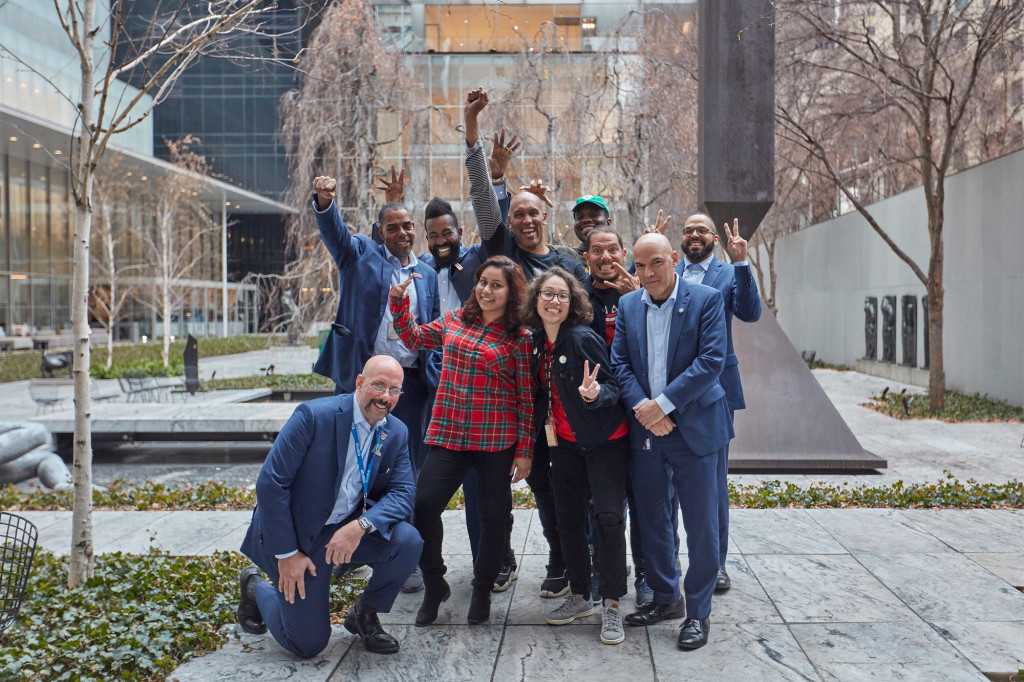[ad_1]
The list of notable art-world figures working at the Museum of Modern Art in New York is long. Well before he became a star, Jeff Koons—the maker of many shiny objects that sell for tens of millions of dollars—held a post at the museum’s membership desk. Lucy Lippard, whose writings effectively helped define Conceptualism during the 1960s, was a page at the museum’s library. The Minimalist-minded Sol LeWitt famously manned the bookstore. Sculptor Allan McCollum held a post as a preparator when the museum mounted a Pablo Picasso retrospective in 1980. Painter Robert Ryman was paid $80 a week as guard in the ’50s. And so on and so forth.
Who are candidates to join such a legacy today? Look no further than a new project by artist Chemi Rosado-Seijo for some answers. For a new audio-guide series called “Beyond the Uniform,” Rosado-Seijo collaborated with MoMA security officers who double as artists when they’re not on duty. Each audio clip features a MoMA security worker responding to a meaningful artwork at the museum—and, even while the institution is closed during the coronavirus emergency, the project is available to experience online.
“I had been wanting to work with the security guards at MoMA for a long time,” Rosado-Seijo said in late February, speaking from his home base in San Juan, Puerto Rico. “Most of the guards at MoMA are Afro-Colombians, African-Americans, Latinos, and Puerto Ricans. I was so curious.”
To the uninitiated, many of Rosado-Seijo’s creations barely come across as artworks at all. They typically comprise conversations, events, and educational programs that unfold over time, often outside the confines of museums and galleries—under the rubric of what art historians have called social practice. For his contribution to the 2017 Whitney Biennial, Rosado-Seijo took over a school classroom in the city, and children studied at the museum each day. In the Lower Manhattan classroom where the students would have typically been taught, works by Biennial artists appeared.
“Beyond the Uniform” came to share a similar sensibility, after MoMA approached him with the hope of luring the city inside the institution’s walls. “They wanted to work on bringing New York into museums,” Rosado-Seijo said. “The guards are definitely New York, and they definitely don’t usually have a voice. The workers have this position of being invisible, even though they actually are very public.”
Contributions from the nine security officers who participated vary widely. (All of their offerings appear in both Spanish and English.) Kevin Reid, also a rapper under the name LuxuReid, addresses Kerry James Marshall’s famed 2015 painting Untitled (policeman) in a rap with lyrics like, “So precise how I’m carving this up. I’m standing right in front of you. You ain’t looking hard enough.” Joseph N. Tramantano, a film-loving security officer who also does voice acting and drumming, uses posters for Frankenstein and a Gretchen Bender video installation to address his memories of going to the movies. And Brian Wilson, who also makes art under the name Soigne Deluxe, muses on his own identity as a gay artist via a Keith Haring painting.
For Eva Luisa Rodríguez, there was no choice but to respond to a Frida Kahlo self-portrait using spoken-word poetry. She calls Kahlo a “warrior of feminism,” and goes on to address the painting: “You exude a radical inferno of politics and stereotypes in your art that will never be extinguished.” Asked about her creation, Rodríguez said, “Frida Kahlo is one of my favorite artists, and the fact that we have one of her pieces here—and that it happens to be one of my favorites [as a] feminist—was perfect.”
As “Behind the Uniform” makes clear, security guards often secure interesting thoughts when guarding art. “This is a breakthrough,” Rodríguez said. “We are more than a uniform. We are humans—we are artists.”
[ad_2]
Source link

